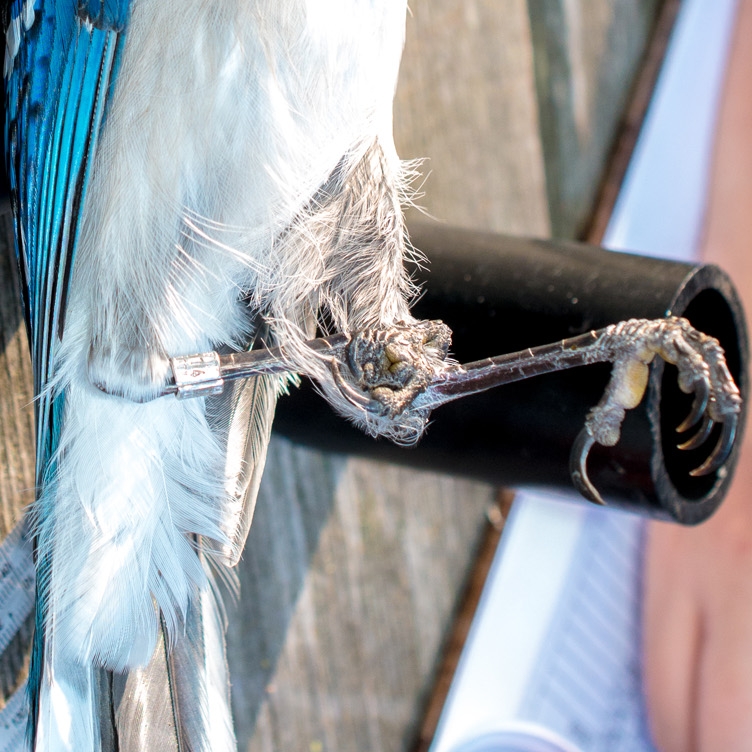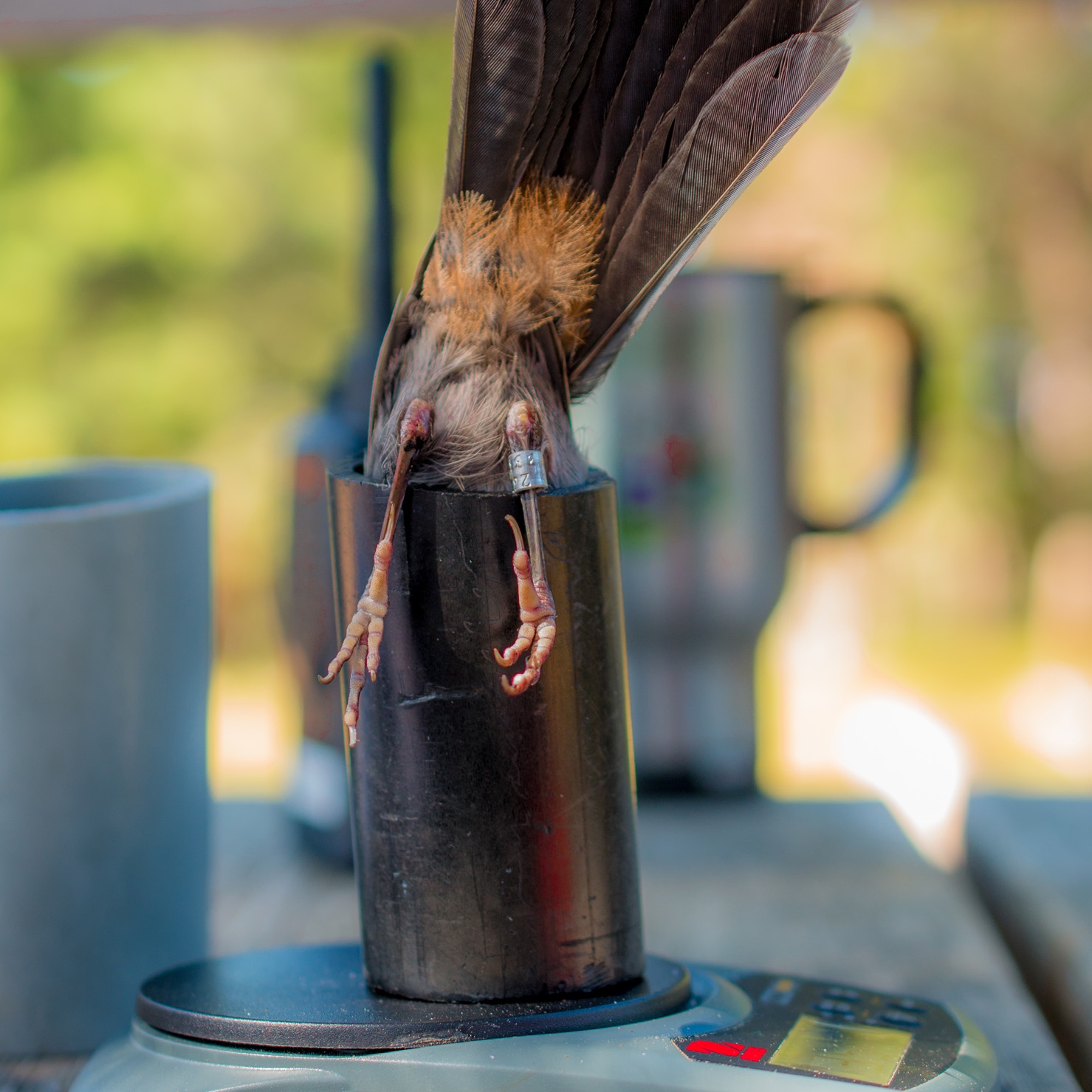Our goal is to better understand and protect the birds living on and passing through Cape Cod, share in their lives with the public, all while proudly participating in the rich history and vibrant future of ornithological research in the area.
how does banding work?
Capture
Year after year, nets are placed in the same locations and operated in the same months, for five hours every day weather allows, starting at sunrise.
Mist nets are made of very fine mesh and almost invisible against a forest background. As they fly around the habitat, birds fly into the nets and fall into the mesh pockets.
Extract
Trained staff patrol the nets regularly. They gently untangle and extract the birds, place them into soft cotton bags and carry them back to the banding station for processing.
Band
Birds are taken out of the bag by the banders, who secure a band on the right leg using special pliers. The bander ensures the band can rotate and move freely and doesn't pinch the bird in any way.
Each band has a unique number engraved. They are issued by the Bird Banding Lab, which collects all the data on banded birds in North America. When a bird is recaptured or found, the band can be reported to the BBL, and you will receive a certificate telling you more about the bird's history.
Data
Once the band is securely on, banders collect more information on each individual. They identify the species, age and sex, evaluate general body condition, measure wing length and mass, and may collect more information or samples depending on projects.
Information is recorded by hand, then later entered in a database, error-checked, and submitted to the Bird Banding Lab.
Release
Once all the data is recorded, the birds are immediately released, completely unharmed. Birds generally spend less than half an hour in our company before they are off with a nip and a chip!
Some birds are recaptured a few times during a season, some year after year. This gives us a wealth of information on their life history, their migration habits and their survival on the sanctuary.





